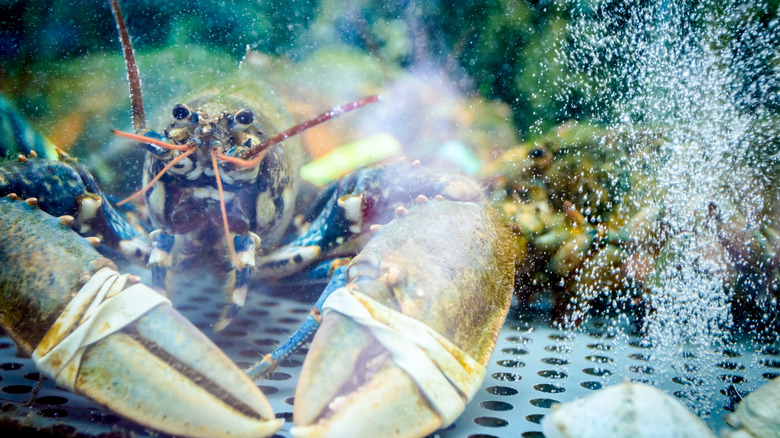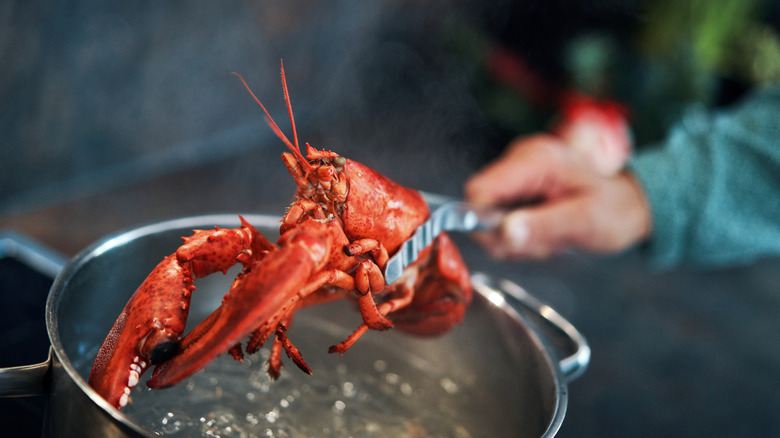Watch Out For This One Red Flag When Buying Lobster At The Store
Unless you're a professional chef, a New England native, or a well-heeled amateur cook with a taste for seafood, you probably don't have much experience with cooking lobster. That means that, if and when you decide to splurge, you'll probably need a little help purchasing the pricy crustacean. According to chef, restaurateur, and Food Network star Geoffrey Zakarian, there's only one thing you really need to watch for, though. "It has to be live," Zakarian told The Takeout at the New York City Wine & Food Festival. Does that mean it has to be moving? "100%," he confirmed, "because otherwise it's dead."
Yes, there are other considerations — after all, you don't want to make mistakes when buying lobster. For example, the lobster you have your eye on should have its claws and antennae. However, Zakarian says you don't need to be too picky as long as it's moving: Don't worry about factors like size or color. "If it's live, it's fine," he said. "If it's dead, it's dead. If it's alive, it's good." Even if an unresponsive lobster is alive, it might not survive the ride home — and lobsters start to spoil immediately. Get the freshest lobster possible to ensure that it's still living by the time you bring out the stock pot. Store live lobsters by wrapping them in a damp cloth and putting them in the fridge. Avoid placing them in tap water because they are saltwater creatures.
But why is it so important to buy live lobsters, anyway? Most of the other animals we eat are dead by the time they get to stores. What's the big deal?
The reason lobsters should be alive before cooking
Lobsters use enzymes to digest their food. Once a lobster dies, the enzymes start breaking down the crustacean's own flesh — just like they break down the fish, shrimp, and crabs that their host fed on. The result is mushy, unappealing meat, often in under an hour.
And it gets worse. As the lobster's flesh starts to break down, it releases nutrients. That might sound like good news: You'll get mushy meat, but at least it'll be a nutritious meal. Unfortunately, the bacteria that live in lobsters' bodies thrive on those nutrients. Those bacteria can multiply to dangerous levels within hours of the lobster's death, and you can't cook them off once they've taken over. Eating the lobster at that point would be asking for food poisoning.
Cooking the lobster stops the enzymes. That's why many cooks toss live lobsters directly into boiling water. Yet lobsters do feel pain, and being cooked alive is a grisly way to go. To minimize the lobster's suffering, you can use your biggest, sharpest knife to cut off its head directly before tossing it into the pot. If the thought of chopping the crustacean's head off freaks you out more than boiling it alive — or if you want to keep your risk of food poisoning as low as possible — you can put it on ice for 15 minutes before tossing it into the pot. The shock to the lobster's system will ensure a quicker death.

